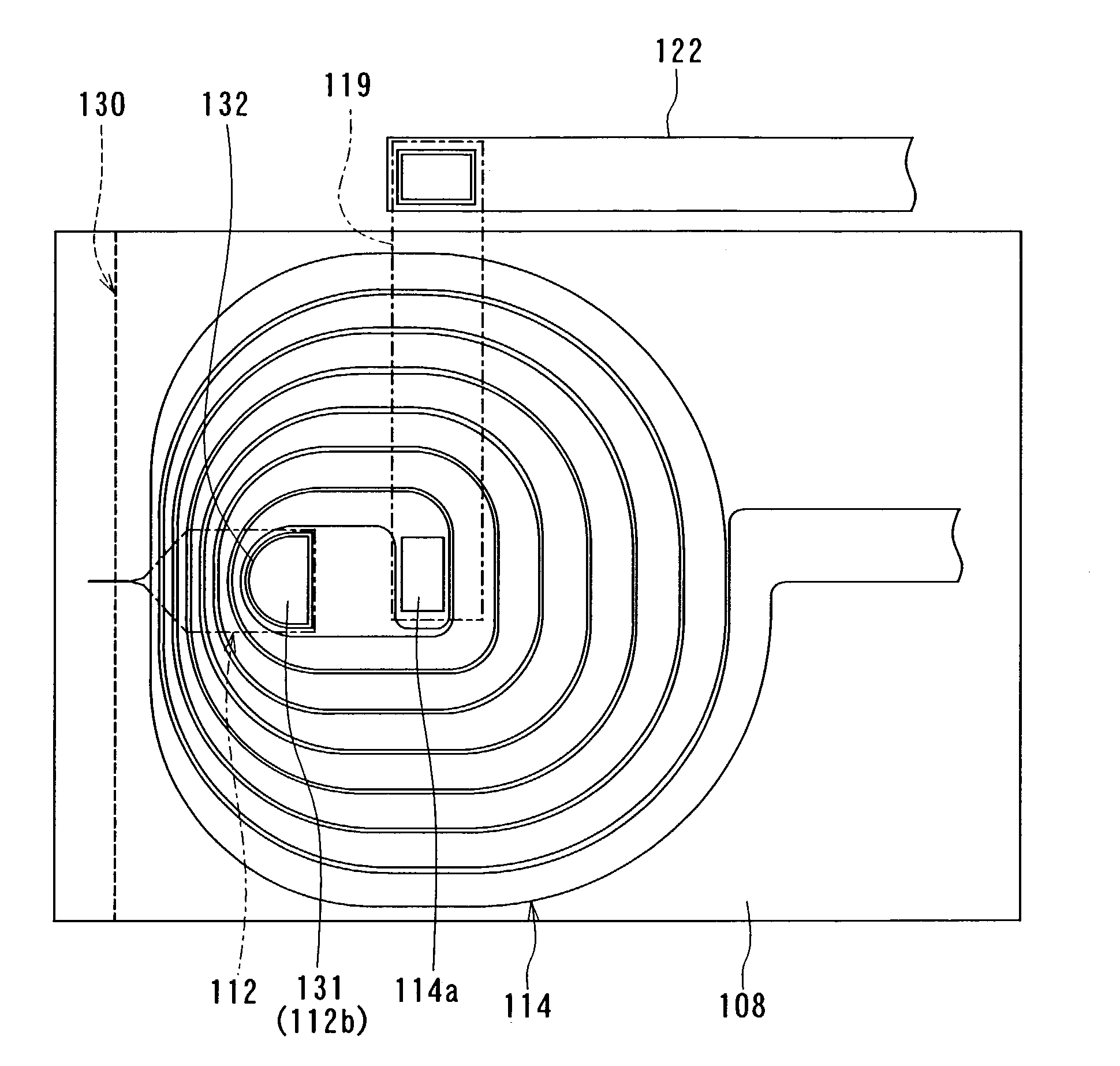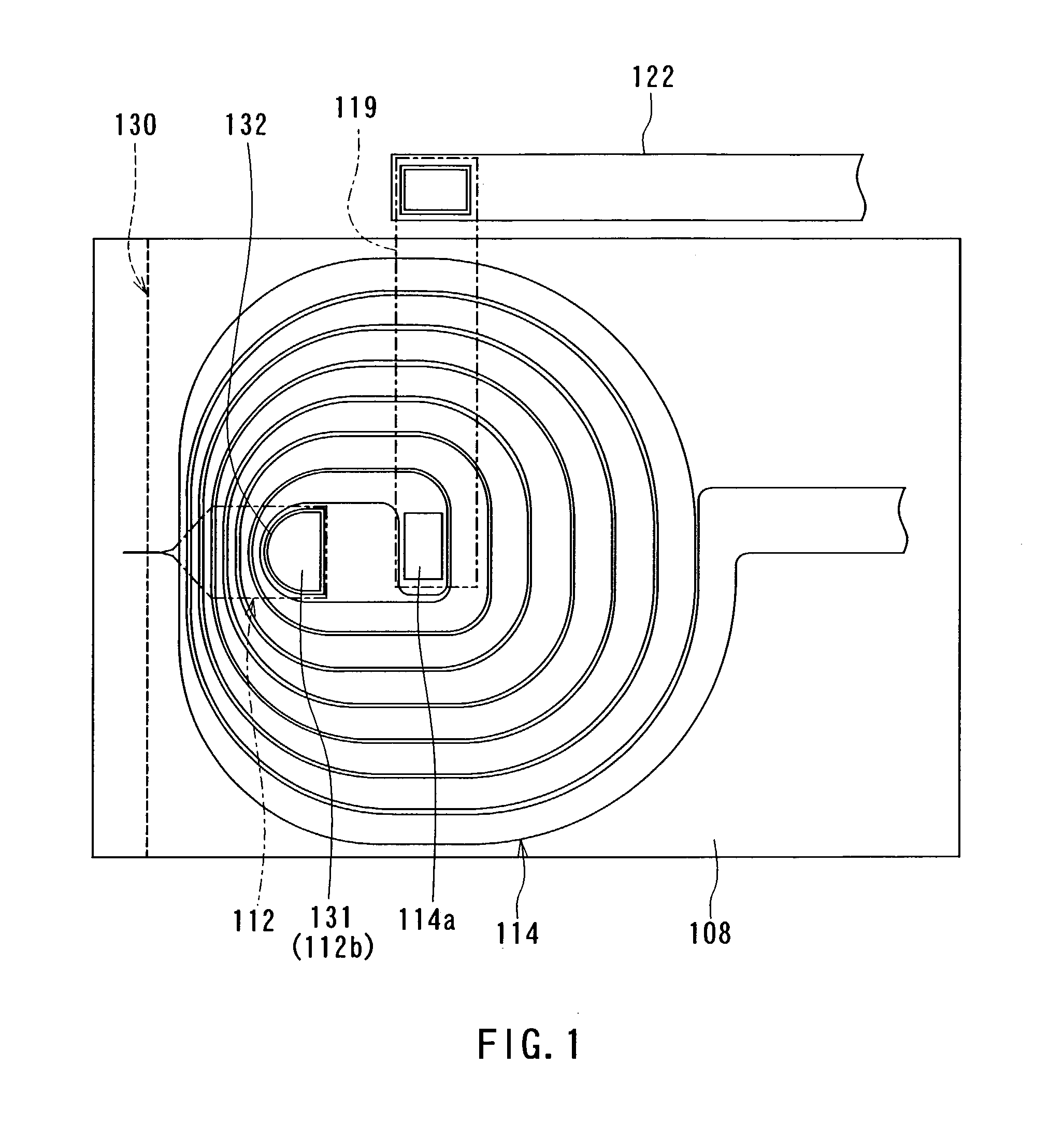Thin-film magnetic head and method of manufacturing same
- Summary
- Abstract
- Description
- Claims
- Application Information
AI Technical Summary
Benefits of technology
Problems solved by technology
Method used
Image
Examples
first embodiment
[0125] [First Embodiment]
[0126] First, a method of manufacturing a thin-film magnetic head according to a first embodiment of the invention will now be described with reference to FIGS. 3A to 11A and FIGS. 3B to 11B. FIGS. 3A to 11A are cross sections each orthogonal to the air bearing surface and the top surface of the substrate. FIGS. 3B to 11B are cross sections of the magnetic pole portion each parallel to the air bearing surface.
[0127] In the method of manufacturing the thin-film magnetic head of the present embodiment, as shown in FIGS. 3A and 3B, an insulating layer 102 made of alumina (Al2O3), for example, is first deposited to a thickness of approximately 2 to 3 μm on a substrate 101 made of aluminum oxide and titanium carbide (Al2O3—TiC), for example. Next, a bottom shield layer 103 intended for a reproducing head, made of a magnetic material such as Permalloy, is formed to a thickness of approximately 2 to 3 μm on the insulating layer 102. The bottom shield layer 103 is ...
second embodiment
[0199] [Second Embodiment]
[0200] Now, a thin-film magnetic head and a method of manufacturing the same according to a second embodiment of the invention will be described with reference to FIG. 23, FIG. 24A to FIG. 38A, FIG. 24B to FIG. 38B, FIG. 39, and FIG. 40. FIG. 22 is a plan view showing the shape and arrangement of a coupling portion and a thin-film coil according to the present embodiment. Note that FIG. 23 shows the state before the air bearing surface is formed by lapping. FIG. 24A to FIG. 38A are cross sections each orthogonal to the air bearing surface and the top surface of the substrate. FIG. 24B to FIG. 38B are cross sections of the magnetic pole portions each parallel to the air bearing surface. FIGS. 39 and 40 are perspective views showing two examples of the configuration of the thin-film magnetic head according to the present embodiment excluding the overcoat layer.
[0201] In the method of manufacturing the thin-film magnetic head of the present embodiment, as sho...
third embodiment
[0260] [Third Embodiment]
[0261] Now, a thin-film magnetic head and a method of manufacturing the same according to a third embodiment of the invention will be described with reference to FIGS. 41A to 52A and FIGS. 41B to 52B. FIGS. 41A to 52A are cross sections each orthogonal to the air bearing surface and the top surface of the substrate. FIGS. 41B to 52B are cross sections of the magnetic pole portion each parallel to the air bearing surface.
[0262] The manufacturing method of the present embodiment is the same as that of the second embodiment up to the step of forming the intercoil insulating film 14.
[0263] Then, in the present embodiment, as shown in FIGS. 41A and 41B, a first conductive film made of Cu, for example, is formed to a thickness of, for example, 50 nm by sputtering, so as to cover the entire top surface of the laminate. On the first conductive film, a second conductive film made of Cu, for example, is formed by CVD to a thickness of 50 nm, for example. The second ...
PUM
 Login to View More
Login to View More Abstract
Description
Claims
Application Information
 Login to View More
Login to View More - R&D
- Intellectual Property
- Life Sciences
- Materials
- Tech Scout
- Unparalleled Data Quality
- Higher Quality Content
- 60% Fewer Hallucinations
Browse by: Latest US Patents, China's latest patents, Technical Efficacy Thesaurus, Application Domain, Technology Topic, Popular Technical Reports.
© 2025 PatSnap. All rights reserved.Legal|Privacy policy|Modern Slavery Act Transparency Statement|Sitemap|About US| Contact US: help@patsnap.com



